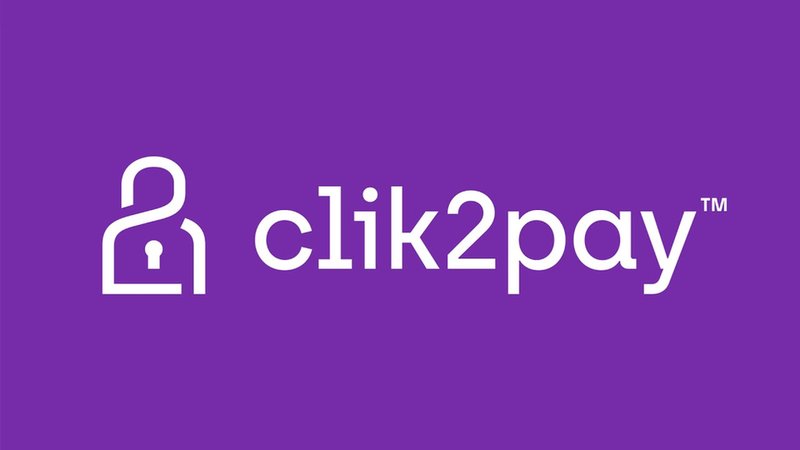products
Clik2pay overlays near-real-time bill payments on Interac e-Transfer
Toronto-based paytech Clik2pay has launched Canada’s first request to pay service which enables customers to pay their bills in near-real time, reports Robin Arnfield

C
lik2pay CEO Mike Bradley tells EPI that the service has seen significant interest from billers, because, unlike other Canadian bill payment methods, payment is guaranteed instantly. This means Clik2pay can be used, for example, to reconnect mobile phone subscribers whose accounts have been suspended for non-payment, and to pay for online purchases or services provided by tradespersons.

Clik2pay provides a more efficient alternative to existing methods. Image: Clik2pay
Clik2pay runs over the Interac e-Transfer near-real-time account-to-account (A2A) payment system, which uses recipients’ email addresses and mobile numbers as proxies for bank account numbers.
Operated by Canadian debit scheme Interac, e-Transfer accounts for 90% of online transfers in Canada, according to Payments Canada. In 2020, Canadian consumers and businesses made 764 million e-Transfer payments, up from 500 million in 2019, and there were 15.2 million active users of the service in 2020. e-Transfer transaction volumes are expected to reach 1 billion in 2021.
As Click2pay automatically pre-populates the payee’s information, it eliminates the need for payors to add billers’ email addresses or mobile numbers to the e-Transfer payee list in their banking app. Instead, they just accept an email- or SMS-based request to pay, with no risk of incorrectly entering the biller’s phone number or email address.
Clik2pay provides a more efficient alternative to existing Canadian bill payment methods. These include cheque and credit cards as well as pre-authorised recurring and one-time payments over the legacy EFT (electronic fund transfer) system operated by core payments infrastructure provider Payments Canada.
Interac e-Transfer offers billers a Request Money feature, but, unlike Clik2pay which allows bulk billing, banks offering e-Transfer Request Money may impose restrictions on the number of bill payment requests that can be sent out.


The Click2pay interface. Image: Clik2pay
EFT system shows its age
According to Bradley, 40% of Canadians pay their bills directly from their bank account. “The EFT system was established in the late 1980s, and is showing its age,” he says. “It’s cumbersome for consumers. They have to enter the biller’s payment details and the payment amount on their online banking app before authorising payment.”
“While EFT bill payments are low-cost, they take several days for the money to get to the biller, and there’s no funds guarantee at the point when the customer makes the bill payment,” says Bradley.
“Although credit card payments are guaranteed to the biller, they also take several days to settle and there is a risk of chargeback. Clik2pay’s benefit to billers is that it’s significantly less expensive than accepting credit and debit card payments and it guarantees payment.”
As Canada currently lacks a real-time payment system, Interac e-Transfer payments are settled the following working day, but the funds are guaranteed to the biller at the time of payment. The payment leaves the payor’s account instantly and cannot be repudiated.
Clik2pay’s clients include Telus, one of Canada’s top three telcos; Freedom Mobile, a mobile operator owned by Shaw Communications; and Bill Gosling, a collections agency which collects on behalf of Canadian challenger bank President’s Choice Financial.
“We have several pilots with Telus. Telus is using Clik2pay for people who are just a few days overdue on their phone bill. Instead of sending the customer to collections which isn’t a good experience for them and expensive for Telus, it can text them, and they can initiate the payment directly from the Telus text message through Clik2pay.”
Speaking at the 2021 Payments Canada Summit, Scott Lapstra, principal consultant at Canada’s Lapstra Consulting, said that paying bills from bank accounts using the EFT batch payment system takes 24 to 48 hours.
“That doesn’t work for collections situations where a customer’s account is suspended or for when a customer has maxed out their credit card and wants to buy something in a store,” he said. “They need to be able to do a real-time payment to increase their balance.”

The Click2pay Text-to-Pay screen. Image: Clik2pay
Speakers at the Payments Canada’s Summit
Also speaking at Payments Canada’s Summit, Raphael Karamichailidis, collections strategy manager at Telus, says that Telus could layer real-time payments into its collection reminders and notifications via email and SMS.
“This would enable us to offer customers real-time payment alternatives to credit cards, so they can get reconnected very quickly if their account is suspended due to non-payment,” he says.
“Outside of collections, we could enable real-time payments for prepaid top-ups or home service installations by an engineer who would send the customer an SMS link for a payment.”

Image: Clik2pay
Payments industry veteran
Clik2pay was founded in 2018 by Bradley, who has worked in digital payments and banking for 30 years. As head of Visa Canada’s product team from 2004 to 2012, Bradley oversaw the launch of Visa chip, contactless and prepaid cards as well as Visa Debit and digital wallets.
“My reason for founding Clik2pay was to make it easier for companies to get paid and for customers to pay their bills,” says Bradley. “We’ve created a customer experience level that sits on top of Interac e-Transfer and enables billers and merchants to receive bank account-based payments.”
Clik2pay was launched on 1 June at the 2021 Payments Canada Summit and currently is operating pilots with its clients. “We started processing live transactions in December 2020, and have had thousands of payments going through our system,” says Bradley.
Peoples Trust, a subsidiary of Vancouver-based People’s Group, is Clik2pay’s banking partner and provides it with access to Interac e-Transfer.
Billers using Clik2pay send a request to pay to their customer’s email address or text it to their mobile phone. They can also include a Clik2pay QR code in their bills. Each Clik2pay message contains the last four digits of the customer’s account number, which they can use to verify that the payment request is genuine.
“We called the service Clik2pay, as all customers need to do to pay a bill is click on the Clik2pay button in an email or the biller’s website or click the link in a text message. This takes them to our portal where we run fraud detection software to check they are a real person, not a bot. They are then automatically redirected to the e-Transfer site where they select their bank, log in, and pay their bill. Clik2pay automatically prepopulates the payments information.”
Clik2pay has developed a mobile app for small businesses that enables a tradesperson providing a service at a customer’s home, for example, to send them a payment link.
“If you’re a service provider such as a plumber and use Square to take in-person payments, you have to buy a card reader for your phone and Square charges 3-4% per transaction,” says Bradley. “With Clik2pay, all you need is the customer’s email address or mobile number and you can send them a request to pay once you’ve completed the job.”

Image: Clik2pay
Consumer benefits
For consumers, Clik2pay provides flexibility and control over when they pay their bills, which is particularly beneficial to people whose finances have been affected by the pandemic. Instead of paying bills through pre-authorised recurring payments on a set date, which might make them overdrawn, they can choose to pay the bill just before the due date with Clik2pay.
Businesses, charitable organisations and other billers such as community associations can initiate Clik2pay payment requests by integrating with Clik2pay’s API or by uploading batch bill payment files or individual requests to the company’s portal. The service offers end-to-end payment tracking, real-time notifications, status updates and transaction history, plus a settlement file once payments are complete.
All Clik2pay transactions are associated with a seven-digit short code, which customers can use to pay their bill by entering it into the Clik2pay box on a biller or merchant’s website. “If you’re talking to a call centre representative and you want to buy something over the phone, they can give you a short code,” adds Bradley.
“You just enter the code into the Clik2pay box on their website and then click the Clik2pay button. This takes you to the payment page for your purchase.”
Real-Time Rail
In 2022, Payments Canada plans to launch the Real-Time Rail (RTR), which will offer instant P2P, B2B and B2C payments between bank accounts using Interac e-Transfer’s technology as its payments messaging exchange system.
This means there will be significant opportunity for overlay payment services such as Clik2pay which leverage e-Transfer, to operate on top of the RTR.
“The RTR will increase access to Canada’s payment systems and improve the cost profile of payment transactions. But we’re not waiting for the RTR, as we’ve been able to develop a very good service just based on today’s e-Transfer system.”
Clik2pay demonstration by Mike Bradley
Clik2pay's explainer video


